Welp, one good thing about having been an active camera collector for over fifteen years now is that if I decide to start reviewing cameras, I’ve got quite a few candidates at hand. My little collection ranges from be they beloved legends to oddball obscurities, and I love shooting with and talking about each of them for various reasons. That said, if there’s one particular camera that is best suited for my first review, it’d have to be the one that started it all for me.
That would be the almighty Olympus Promaster Infinity TWIN. A compact, all-automatic 35mm point and shoot with a unique, twin-lens twist. I’ll get into that in a little bit.
Henceforth, I’ll be referring to the camera as, simply, the Infinity Twin.
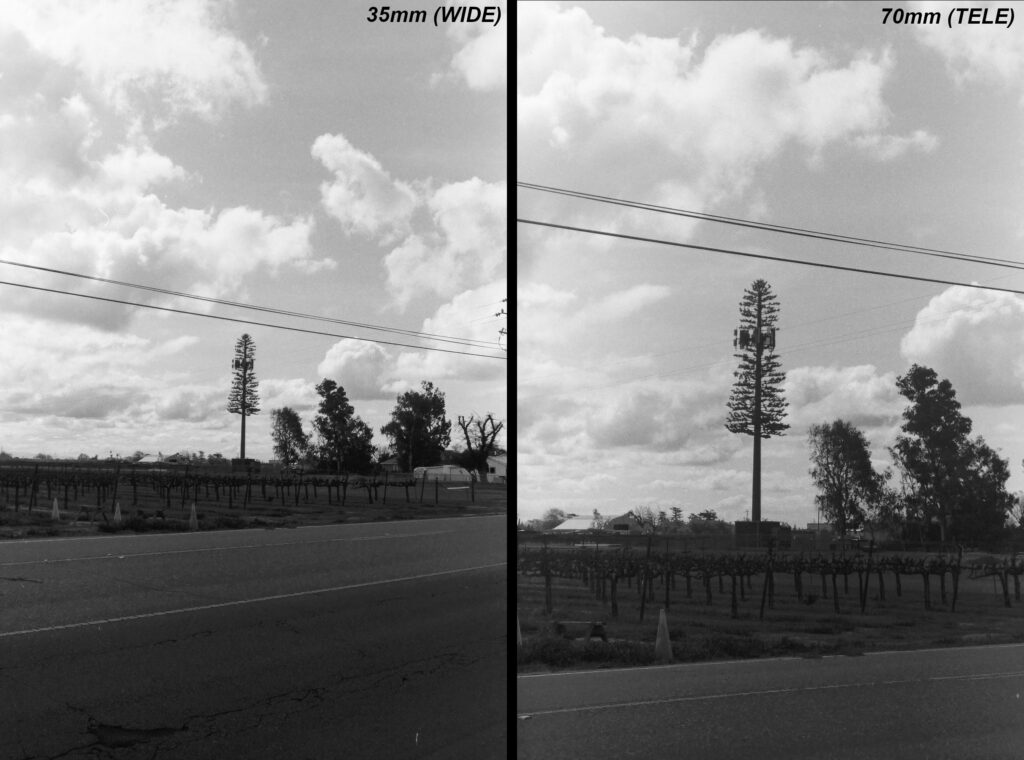
Now, this isn’t a memoir, so I’ll be brief with this little backstory, but I wouldn’t be able to write about this camera without sharing some of my personal history with it. I’ve admittedly got a bit of a biased perspective considering this camera has considerable sentimental value to me. The reason being, it was my first.
It wasn’t my first camera full-stop, as I did have my trusty old Polaroid 600. I had also picked up a little Canon Powershot Digicam in late 2008. Those are great and all, but I wanted to shoot 35mm. Up to that point, I was stuck with disposable cameras from the drug store. In February 2009, I was ready to buy my first proper 35mm camera, so I went to a photography store in Stockton, CA called ‘Gluskins Photo’ (may it rest in peace) to do just that.
Gluskins had a pretty nice selection of your usual suspects. Sleek, vintage SLR’s and rangefinders. Canons, Nikons, and Minoltas (oh my). All in clean condition, and all well out of my price range. I asked the lady who ran the place if they had anything for under $100. She smiled, and handed me this:
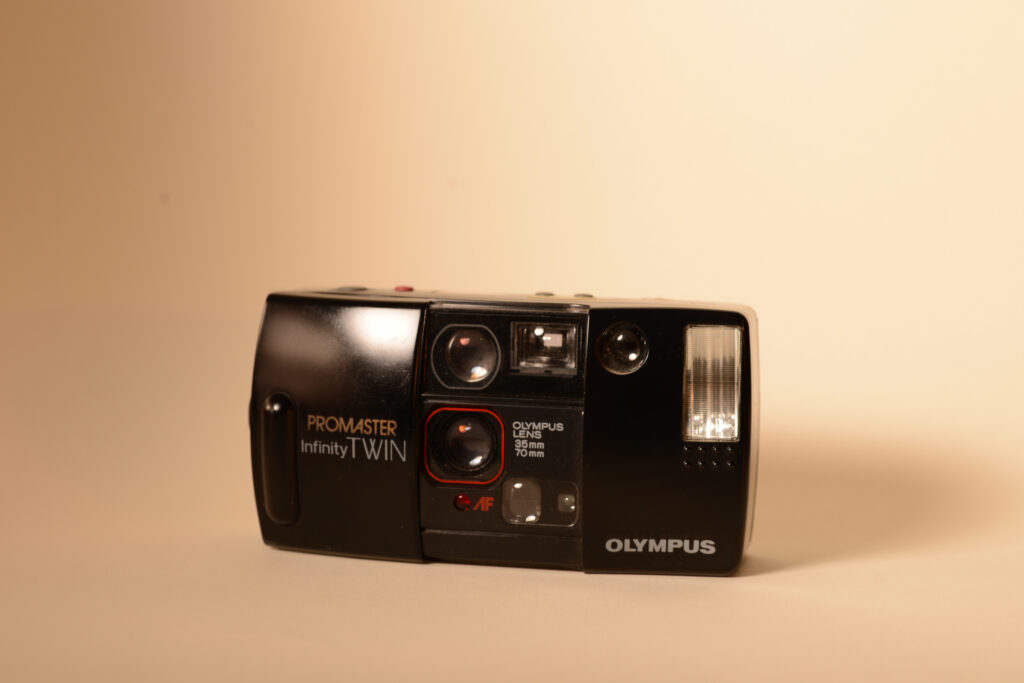
The Infinity Twin isn’t exactly the ideal first camera for the purposes of learning photography, but it’s a fabulous first camera for anyone who just wants to get out and shoot. I’ve shot everything from photo-shoots with models, landscapes, street photography, and even some attempts at wildlife photography. Hey, it may not have a 400mm telephoto, but it’s fast!
It’s remained a personal favorite for all these years because it’s just reliable, fun, and easy as hell to shoot with. Even after I moved on to shooting with manual SLR’s, I would still come back to this baby from time-to-time, just to go shoot pictures for the sake of it. Sometimes it’s nice to let the camera do it all for you, and just focus on finding cool things to shoot.
Did I mention it’s fast? I could shoot easily an entire roll of film in just a few minutes.
Okay, maybe it’s not as bad-ass as some high end cameras with burst mode and whatnot, but the auto-advance gets from one frame to the next in less than a second, and the dual autofocus lenses keep everything constantly in focus. So you really only have to choose between wide-shot, or close-up before hitting the shutter. This makes shooting fast moving subjects pretty fun. And, that’s just in standard mode. The Infinity Twin also has a four-frame continuous shooting option which makes it even faster.
Now, we’re kinda moving into the review already, so I’ll sum up my little history section by saying that what this camera lacked as an educational tool, it more than made up for by providing a generally rewarding shooting experience that (almost) always resulted in photos that I was happy with. Yeah, there were exceptions, but those were typically my fault, and I’ll cover those shortly.
Let’s break this sucker down, and have a look at it’s features.
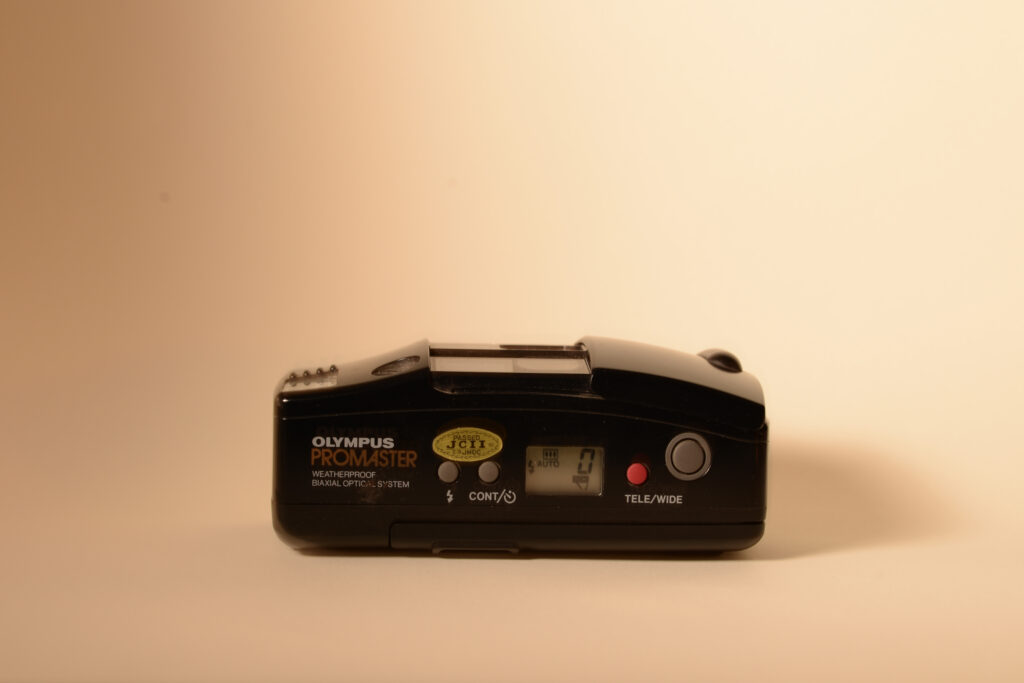
Like most point-and-shoots, The Infinity Twin is designed to be, frankly, stupid-proof.
It’s actually kind of challenging to get bad photos with it. Whether you’re a pro-level photographer, or just a complete novice (like I was in 2009), you probably can’t go wrong with it. Save for a couple notable areas that I’ll cover in a bit, but those aren’t terribly common.
The camera has just four buttons. No dials, switches, or levers. It has a tiny little LCD screen on top that shows your settings, indicator icons, and nothing else. The four buttons in question are as follows: The shutter release (duh), The red lens selector marked as ‘Wide/Tele’, the mode selector button, and your flash on/off selector. More on these in a bit.
As noted earlier, it’s a full-auto camera. It leaves you with pretty much zero manual control whatsoever. Granted, This is to be expected for a point-and-shoot, but there are situations where this is a limitation. This is probably the only factor that can lead to bad exposures, if not accounted for.
So, I guess that’s one way of saying the camera isn’t entirely stupid-proof. I’ve found ways of breaking that barrier. Do not underestimate my ability to be a bonehead.
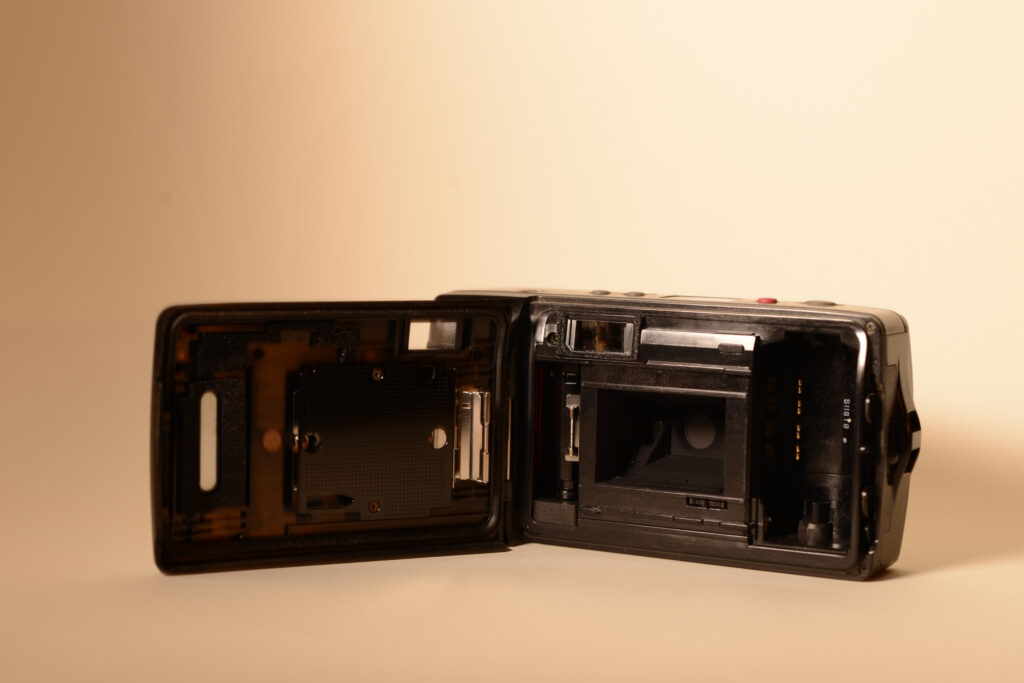
The most probable way to get bad photos with this camera is by using fussy, or highly specialized film that the camera simply wasn’t designed for. This is especially true if the film isn’t DX coded. The Infinity twin relies entirely on DX coding to know what film speed it’s metering for. Again, there’s no option for setting your ISO manually, so in cases where the film is not DX coded, it defaults to 100 ISO. Which is pretty safe a lot of the time, and one could compensate to a degree by pushing or pulling the development if necessary, but only if the film is agreeable enough.
I would say it’s better to stick to consumer grade films, preferably with DX coding (or is at least in the ballpark of 100 ISO). You would also do well to avoid using the camera in mixed lighting conditions (such as shady wooded areas for example), as it has a way of confusing the light meter. Considering that the camera’s internal light meter controls both the shutter and aperture automatically, it’s best to use it in areas with consistent light.
Now, let’s talk about that twin lens feature. Considering its this camera’s namesake, I might as well not put it off any longer.
As mentioned above, these are distinguished by the ‘Wide/Tele’ selector. The ‘Wide’ lens is a 3 element, 35mm f3.6, and the ‘Tele’ lens is a 5 element, 70mm f6.3. These two options are pretty sufficient for most scenes, meaning the photographer only has to move around about half as often as they would with a single integrated lens.
The viewfinder corresponds to the same selector button. It’s your usual ‘over-the-shoulder’ style viewfinder window with a pretty bright, and intuitive display. It shows you both your outer frame, and center focusing indicators. ‘Wide’ mode is the default, but when ‘tele’ mode is selected, a pop-up viewfinder lens crops it to your 70mm equivalent in an instant. This makes composition a breeze, and is the main reason I’d say the camera is so fun to shoot with. Hitting that lens selector changes your image instantly, meaning you’re almost never too far or too close to your subject that just taking a couple steps in either direction couldn’t fix.
The other remarkable thing about this camera is that these lenses are absolutely razor-sharp, and the autofocus is such that focusing is not even a consideration. Provided you have adequate light, and the camera knows your film speed, you’re most likely going to get clean, good-looking photos at least 90 percent of the time. The rest is up to you, and what you’re shooting.
According to the specs sheet I’ve found for the Infinity Twin, It’s shutter speeds range from 1/15th-1/750th. I’ve mentioned the widest apertures already, but I could not find what the narrowest is, my guess is f22.
Now, I’ve got one last feature to go over. Unfortunately, it’s the only real major down-point, the flash.
Not so much the quality of the flash itself, although it is worth noting that Olympus did have to recall a bunch of these cameras along with several other point-and-shoots back in 2006 due to a faulty flash circuit that made the cameras potentially hazardous. It’s unlikely that you’ll wind up with one of those as they’ve largely been taken out of circulation by this point, but it’s worth being aware of.
As far as built-in flashes go, I guess it’s fine. Then again I pretty much hate on-camera flash in any regard, so I’m probably not the guy to tell you whether this one is particularly good or bad. It works, at any rate.
No, the issue with the flash here is that for some baffling reason, it’s always on by default. Why on earth Olympus would do this, I have no idea.
So, like many point and shoots that have the sliding door that covers the lens(es), the camera automatically powers on when the door is moved to the open position. There’s no power button. So, open the door, and it’s on, right?
Yeah, and in this case, that’s true of the flash as well. This means you’ll have to make a point to manually turn that sucker off before hitting the shutter release, or it’s gonna fire every single time. As I mentioned above, I can’t stand on-camera flash, so you can imagine how many times I was frustrated that I’d forgotten to turn it off, and wound up with fugly lighting in my photos. Granted, if you get in the habit of immediately turning the flash off every time you power it up, than it’s a non issue, but it can be very annoying if you forget.
One other thing that some may find irritating is that the camera requires two CR123 batteries to function. Personally, that’s never bothered me, but I know some people have a rager for that. “Why can’t it just use AA or AAA batteries?” They might say. Seeing as those are much more accessible, and much cheaper.
Eh, the 123’s last longer, so I personally don’t care, but it’s worth mentioning.
On that note, I guess that about covers it. So let’s get to my field test and sample photos, and we’ll wrap it up.
Now, obviously I’ve shot with this camera many times over the last fifteen years, but a field test for the purpose of this review (and to give me an excuse to get out of my apartment and shoot some film) was in order to freshen up my take on it since I hadn’t taken it for a spin in a few months (stupid winter weather).
I rode out to the edge of town for some wide landscape scenes, and shot a 24 exposure roll of Kentmere Pan 100. I mainly focused on getting some examples of the ‘wide’ lens and the ‘tele’ lens for comparison.
I developed this roll with my normal process: Rodinal, 1+50 dilution for 15 minutes, and I used Photographer’s Formulary indicator stop bath and TF-5 archival fixer. I scanned the negatives with my little Wolverine scanner (I’m aching to upgrade to an Epson flatbed, but not there yet.), and only did a minor S-curve adjustment in post to add some contrast (Kentmere tends to be a bit flat, and favors the midtones so a little touch-up is usually necessary.), And here’s what I got:
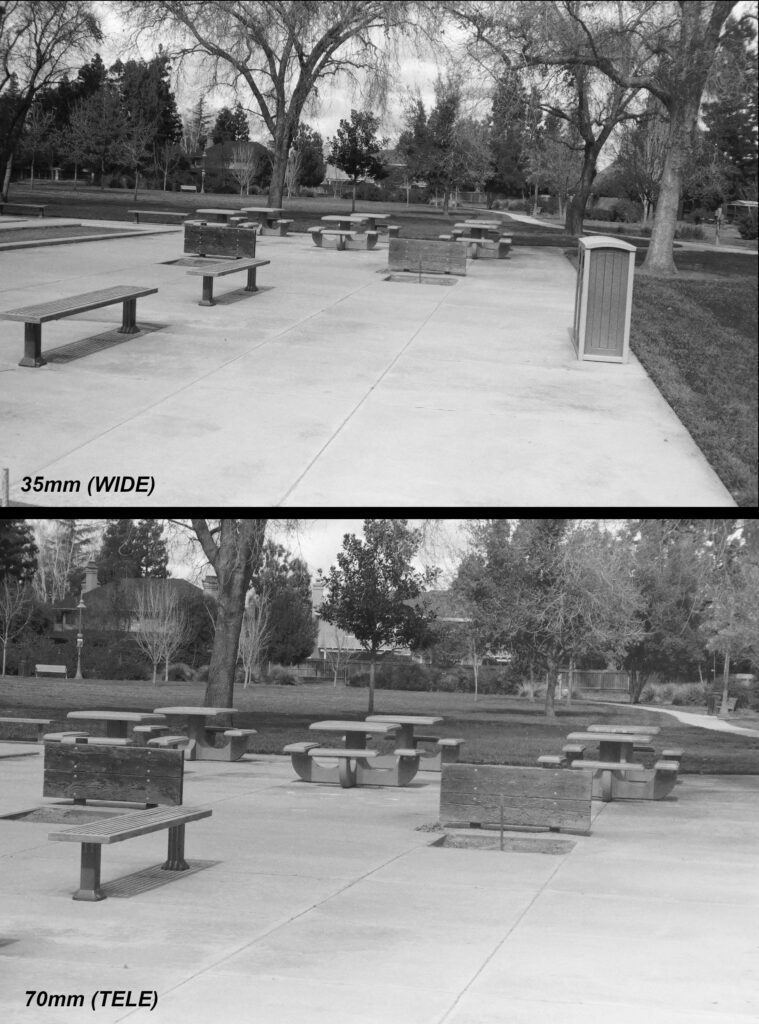



So to wrap this up, I’ll reiterate that the Infinity Twin is not much of a learning tool, and it’s not intended for that kind of user. It’s a consumer grade point-and-shoot intended for ‘normies’ who want something easy, and consistently high-performing at a reasonable price.
A quick search on ebay yields an average asking price of $40, and I’d say that’s not bad at all. I paid about $60 for mine at Gluskin’s back in ‘09, and I got every penny’s worth many times over.
Even for highly skilled photographers who are accustomed to controlling everything manually, one could really fall in love with this unique little treasure of a camera for it’s reliability, speed, and that all-important fun factor.
It allows the user to focus purely on the subject matter, and trust (within reason) that the camera will have your back with regard to everything else.
It was my first dedicated 35mm camera, and fifteen years later it remains a personal favorite, and a proud member of my camera collection that I will never, ever part with.
Cheers!
– Cory A. Jones
Check me out on Instagram
Share this post:
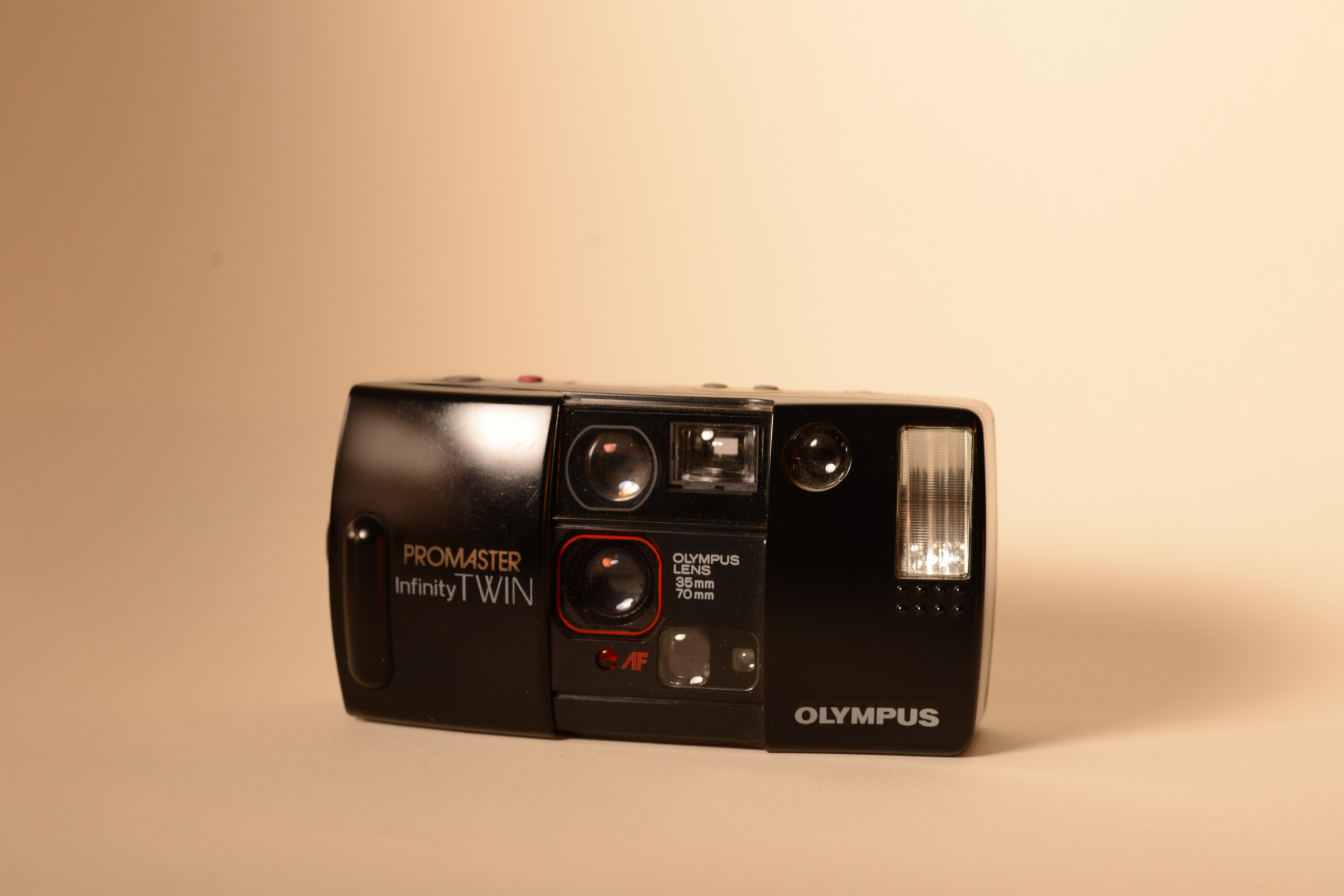
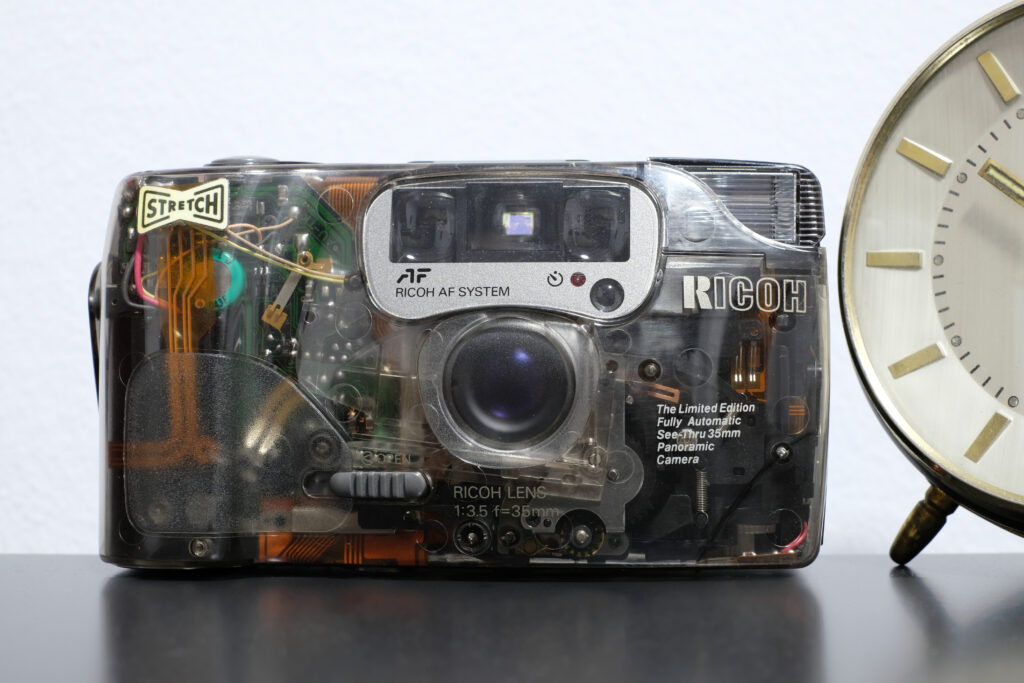
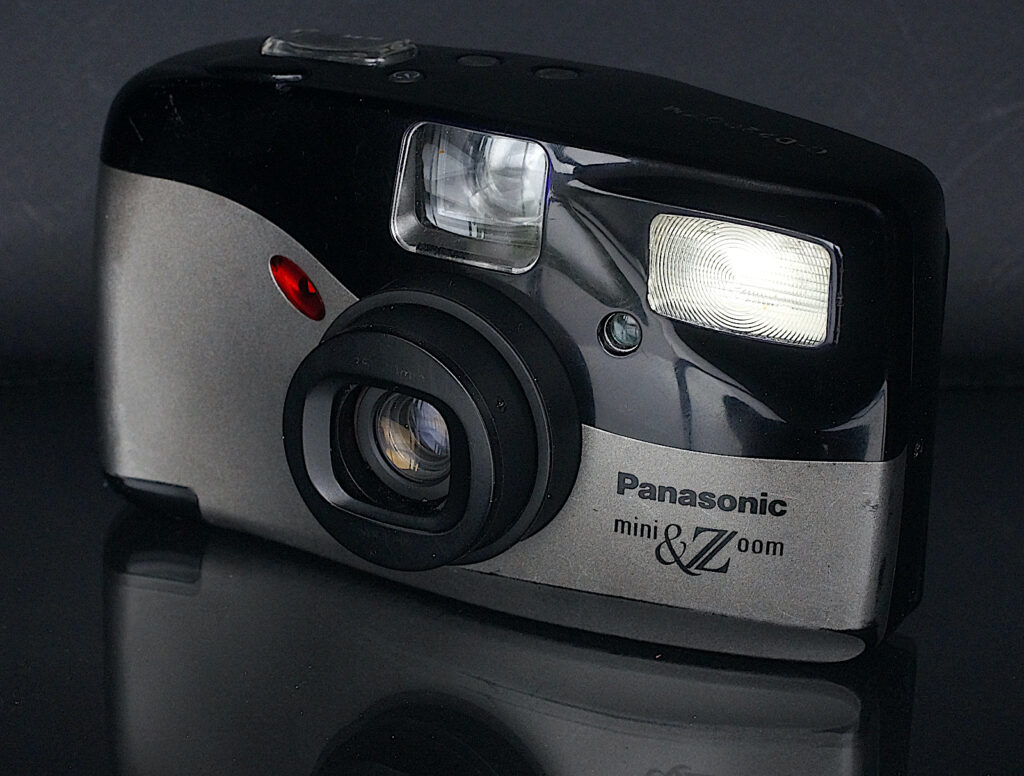
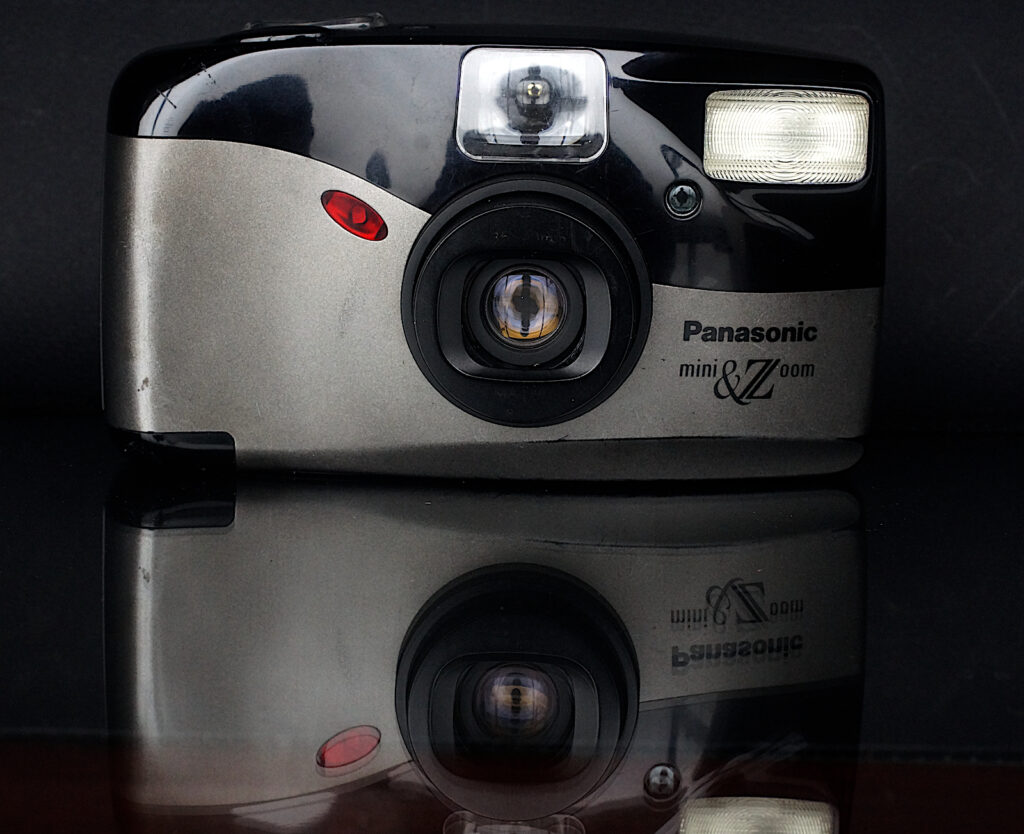
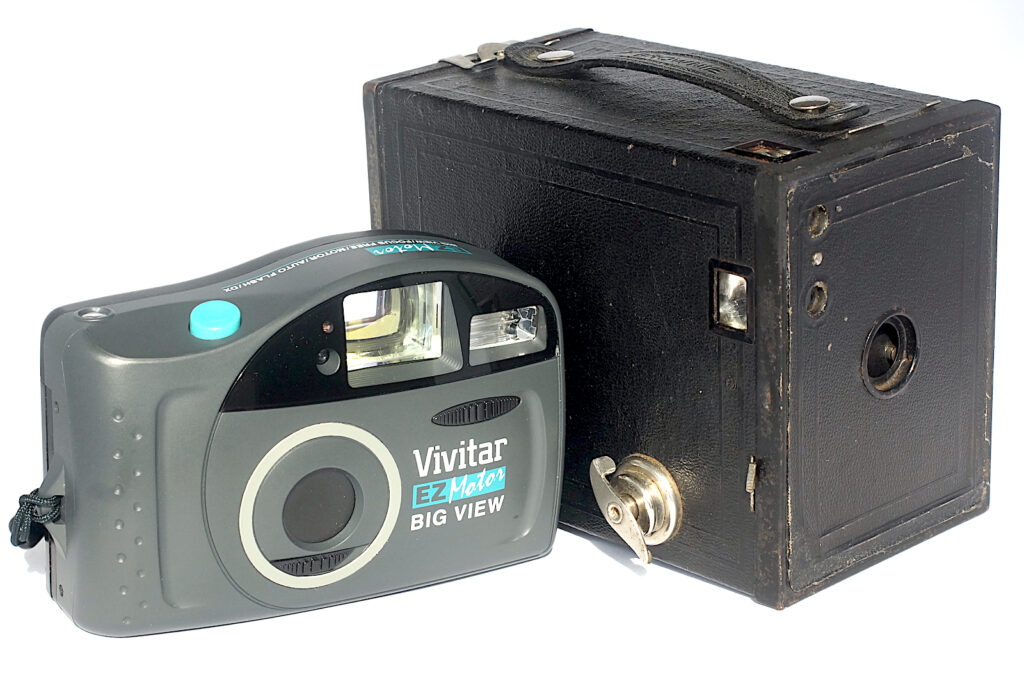




Comments
Gary Smith on Olympus Promaster Infinity TWIN Review – It’s got the POWER!
Comment posted: 10/05/2024
Lee Johnson on Olympus Promaster Infinity TWIN Review – It’s got the POWER!
Comment posted: 10/05/2024
Nice review and even better pictures.
Jeffery Luhn on Olympus Promaster Infinity TWIN Review – It’s got the POWER!
Comment posted: 10/05/2024
Keith Drysdale on Olympus Promaster Infinity TWIN Review – It’s got the POWER!
Comment posted: 14/08/2024